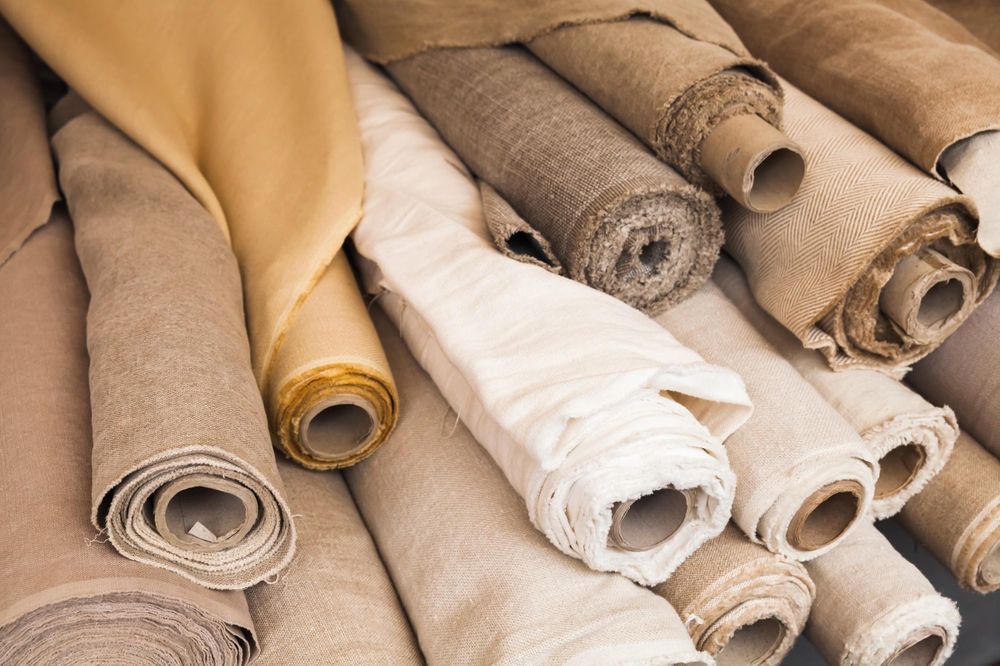Eco-friendly fabrics aren’t just trendy; they’re a way to care for the planet. Traditional clothing production contributes to microplastic pollution, water waste, and soil degradation.
Look for sustainable fabrics like modal and lyocell made with eucalyptus or beech tree pulp. Or try pineapple leather, which looks and feels just like traditional leather but leaves a minimal footprint.
Linen
Linen is a natural fabric that is made from flax plants. It is a highly sustainable fabric because it doesn’t require much water and can be harvested without pesticides or artificial fertilizers. In addition, it uses all parts of the plant, so there’s minimal waste. It also requires very little maintenance and is naturally breathable and long-lasting. Linen can be washed over 100 times before it shows signs of wear.
Another eco-friendly fabric that is making waves in the fashion industry is bamboo. This plant is an excellent alternative to cotton, as it is a renewable source of textiles and is much more sustainable to produce. It can also be grown organically and doesn’t use synthetic chemicals or pesticides during production. It also absorbs more carbon dioxide and releases oxygen compared to other woody plants, which helps reduce greenhouse gases in the atmosphere.
When shopping for a sustainable garment, look for a label that is certified organic or has the Cradle to Cradle logo. This certification focuses on all aspects of the garment’s life cycle, from sourcing raw materials to manufacturing and labeling. It also covers the eco friendly fabrics used to ensure they are free of harmful chemicals, toxins, and carcinogenic dyes. It also looks at whether the company is reducing its water usage and energy consumption, which can help to save the environment.
Modal
Modal is a semi-synthetic fabric that has recently gained popularity among sustainable brands. It’s a comfortable, soft, lightweight, moisture-wicking material. It has a silky-smooth hand feel and is comparable to rayon in terms of durability. Still, the Modal has the bonus of having an eco-friendly accreditation.
While Modal is an eco-friendly option, it’s essential to understand how it’s made. Conventional Modal requires high levels of chemicals, which can harm workers and ecosystems. The process is also a closed loop, meaning any chemical used during production is reused instead of discarded and dumped into the environment. Additionally, many modal manufacturers now use “chemical scrubbers” to trap harmful chemicals before they enter the ecosystem.
Another critical factor in determining whether a modal product is sustainable is where the wood to produce it comes from. Using wood from forests not harvested responsibly can cause deforestation, a major fashion industry problem. However, there are options for sourcing the wood required to make Modal more responsibly. Some brands only use modals from trees grown in sustainable forests. The cellulose used to create Modal can also be produced from recycled artificial cellulosic fibers.
Lyocell
While international organizations, governments, and businesses work on a more extensive solution for sustainable fashion, we can all take small steps with our everyday choices. One of those choices is knowing what fabric we’re buying and choosing the most eco-friendly options. Lyocell, also known as Tencel, is a soft, smooth, and silky textile that feels great on the skin and has excellent temperature regulation and moisture absorption properties.
This semi-synthetic fabric is derived from wood cellulose and has quickly become a sustainable alternative to cotton. Its popularity is mostly because it uses less water than cotton in manufacturing. It’s also incredibly breathable, which makes it ideal for summer clothing and bedding. It’s also a good option for people with sensitive skin or who are allergic to synthetic fabrics.
While lyocell is an eco-friendly fabric, it’s essential to check that your retailer sources it sustainably. Using this wood pulp fiber could cause deforestation if not sourced sustainably.
EcoVero
EcoVero is a semi-synthetic fabric from renewable materials like wood and plant matter. The fiber-producing company manufactures it and uses sustainably sourced timber and pulp. Its manufacturing generates up to 50% less water and emissions than its fabric counterpart, viscose rayon. This makes it one of the most sustainable fabrics available presently!
The fabric is derived from plant matter, mostly bamboo and other pulp trees. It is then purified and extended to make long filaments, ready for spinning into threads. This process is less energy-intensive than manufacturing generic viscose. It does not involve toxic chemicals such as carbon disulfide or sulphuric acid that can harm the environment and workers.
It is a third-generation cellulosic fiber, following modal and lyocell. The company behind it, Lenzing, has developed an environmentally responsible closed-loop production process for the material. This allows the company to reuse 99% of all chemical waste.
Whether used in clothes or home textiles, the fabric is biodegradable and compostable under industrial, soil, freshwater, and marine conditions. It also takes a fraction of the time to decompose than polyester, which can take up to 200 years to break down under similar conditions. The fabric is breathable and moisture-wicking, perfect for leisure wear or intimates. It is recommended not to dry EcoVero garments in a tumble dryer. Instead, hang them up and allow them to air dry naturally. This will save vast amounts of energy, money, and CO2 emissions.






